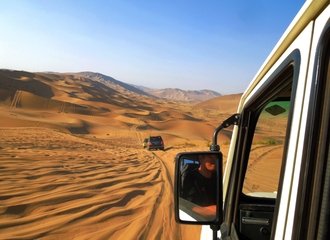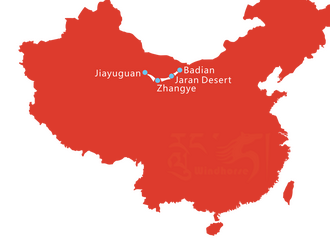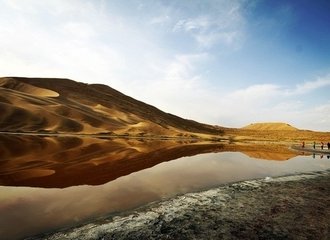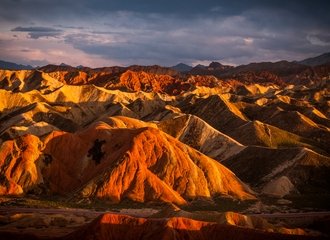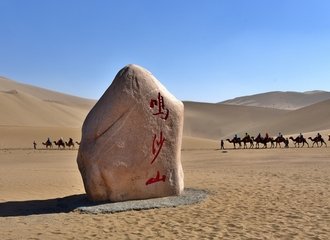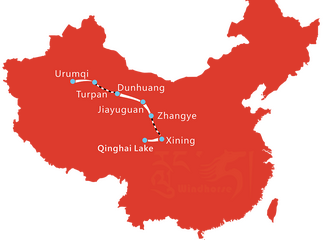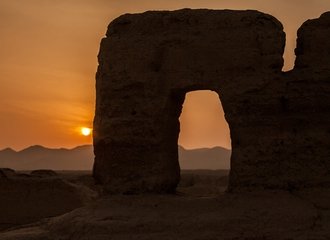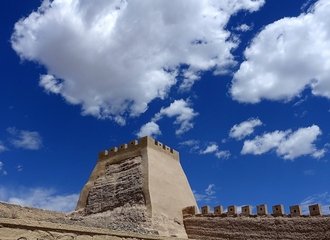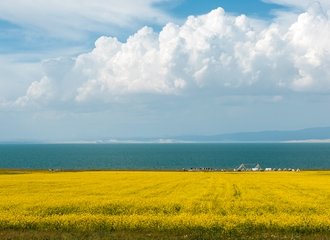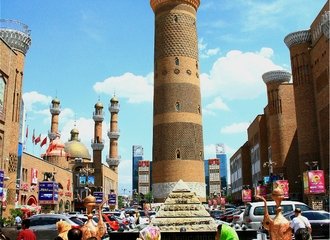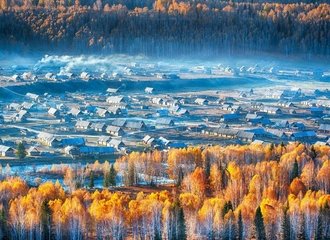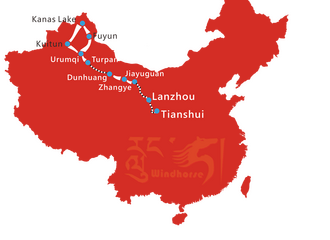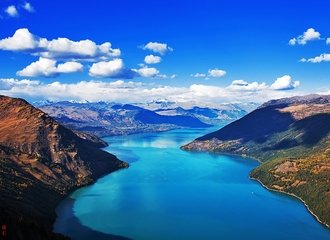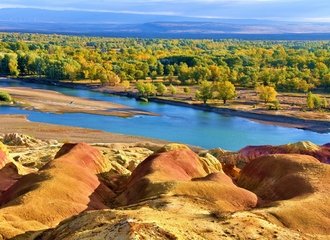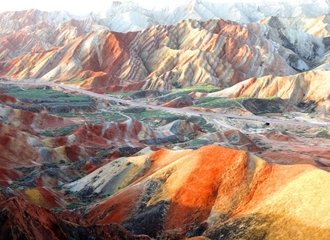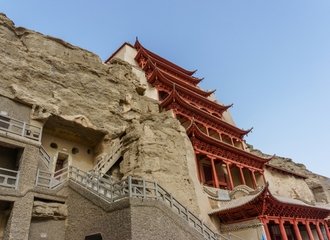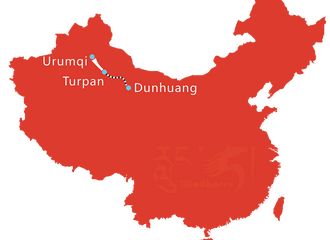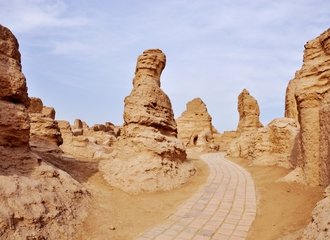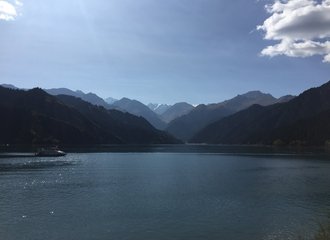Ganden Monastery Near Lhasa, Tibet
Ganden Monastery is one of “the great three” Gelugpa monasteries in Tibet, the others are Drepung Monastery and Sera Monastery, both of which are located in Lhasa city. For that reason, it is definitely one of the most remarkable places to see on your tours to Tibet.
Ganden Monastery is a great choice for those who have only limited time for one monastery excursion outside Lhasa in their tours to Tibet. Not vanishing with time, Ganden still occupies an important position in the history of Tibetan Buddhism, and it’s an experience, unlike the other major Gelugpa monasteries in the Lhasa area, with its picturesque views of the surrounding Kyi-chu valley and fascinating Kora.
Quick Facts about Ganden Monastery
Location: Ganden Monastery is located on the Wangbur Mountain, approximately 40 kilometers northeast of Lhasa, Tibet.
Founding Year: It was founded in 1409 by Je Tsongkhapa, the founder of the Gelug school of Tibetan Buddhism.
Name Meaning: "Ganden" is the Tibetan name for Tushita, the heavenly abode of the bodhisattva Maitreya.
Historical Significance: Ganden Monastery is one of the "Great Three" Gelugpa University monasteries of Tibet, along with Sera Monastery and Drepung Monastery.
Destruction and Restoration: The monastery suffered extensive damage during the Cultural Revolution but has been partially rebuilt and restored since the 1980s.
Main Halls: The monastery complex includes several significant buildings, such as the Tsokchen Assembly Hall, the Serdung, which houses Tsongkhapa's tomb, and the Ngam Cho Khang Chapel.
Pilgrimage Circuit: The kora (pilgrimage circuit) around the monastery is a popular spiritual activity for both pilgrims and tourists, offering stunning views of the surrounding landscapes.
Festival: Ganden Monastery hosts the Ganden Ngamchoe Festival on the 25th day of the 10th month of the Tibetan calendar to commemorate the death anniversary of Je Tsongkhapa.
Monastic Education: It remains a vital center for Buddhist learning, with monks engaging in rigorous studies of Buddhist philosophy, debate, and meditation.
Scenic Location: The monastery is situated at an elevation of about 4,300 meters, offering panoramic views of the Kyichu Valley.
Access: The road to Ganden Monastery from Lhasa is scenic but winding and steep. It is advisable to hire a reliable driver or join a tour group.
Visitor Attraction: Today, Ganden Monastery is a major tourist attraction, providing insight into Tibetan monastic life and Gelugpa traditions.
Overview of Ganden Monastery
About 50 km (31 mi.) northeast of Lhasa, Ganden Monastery is situated atop the Wangbur Ri Mountain with an altitude of 3,800m (11,2467 ft.) above sea level. It was the first monastery established by the founder of the Gelugpa Sect, Tsongkhapa himself in 1409. Since the disciples of this sect always wear yellow hats, thus it is also widely renowned as the Yellow Hat Sect. When Tsongkhapa died in 1411, his preserved body was buried there in a silver and gold-encrusted tomb, and the abbot of the monastery passed it to his first two disciples, Khedrub Je and Gyaltsab Je, who flanked the images of Tsongkhapa throughout the monastery. From that time forth, Ganden Monastery has become the main seat of Gelug administrative and political power.
There are generally two principal original colleges in Ganden Monastery, Jangtse, and Shartse, meaning North Peak and East Peak respectively. Even though it’s considered to be the smallest one among “the great three”, the monastery remains three times as large as the Potala Palace. It used to house about 4000 monks, but today there are just about 200 - 300 monks.
The Tibetan word “Ganden” came from the name of the Western Paradise, which means joyous, it’s the dwelling place of Jampa, which is the Future Buddha. The head of the Gelugpa order came to be known as the Ganden Tripa, and what’s interesting is that this post was earned through scholarly merit, not reincarnation. Ganden Monastery is the place where the successive Ganden Tripa lived. More than 90 Ganden Tripas’ pagodas and many cultural relics, murals, silk weaving Thangkas, etc. are preserved here.
It is composed of over 50 building complexes, including Tsokchen Assembly Hall, the tomb of Tsongkhapa, the Ngam Cho Khang, the Chapel of Jampa, Gomde Khang, Barkhang (Printing Press), the Residence of Ganden Tripa, Kangtsangs, debating courtyard, Tratsangs, and Myicuns.

Festivals at Ganden Monastery
The Ganden Thangka Unveiling Festival (Buddha Painting Unfolding Festival) annually takes place on the 15th of the 6th month of the Tibetan Calendar (normally late July or early August of the Gregorian Calendar). It is one of the important festivals for local Tibetans. On this day of every year, thousands of local people, dressing traditionally, arrive in the early morning of pre-dawn and climb the walls and sit on the hillside to await the biggest event of that day: the unveiling of the gigantic Thangka, a huge hand-woven tapestry painted with Grand Buddha image.
The Ganden Nga Choe Festival (Lotus Lantern Festival) has been celebrated since Great Gelugpa founder Tsongkhapa's death on October 25, 1419, in the Tibetan Calendar (normally late November or early December in the Gregorian Calendar). From then on, his followers celebrate the day as his death anniversary to commemorate their reverend teacher, gradually it is celebrated in the entire Tibet. On that day Tibetans light butter lamps on their roof and pray for him, and the monasteries also light thousands of butter lamps all around the monasteries and all monks gather in the main assembly hall to pray.
Things to do at Ganden Monastery
During the visit to the Ganden Monastery, three sights should not be missed at Ganden Monastery:
- Serdung, which contains the tomb of Tsongkhapa
- The Tsokchen Assembly Hall, which houses the statues of the 16 Arhats and two huge statues of Tsongkhapa only be seen from upstairs. Besides, there is an inner sanctum connected by stairs housing the throne of Tsongkhapa
- The Ngam Cho Khang, one of Ganden’s oldest chapels houses many artifacts belonging to Tsongkhapa.
Ganden Monastery is also well-known for its Kora. There are two parts to the walk, the high kora, and the low kora. No matter which Kora you choose, enjoy the superb views over the braided Kyi-chu valley along the way and see large numbers of pilgrims and monks offering prayers, rubbing holy rocks, and prostrating themselves along the path.
The walk along the high Kora follows the path southeast of the parking area. After a short walk, the trail splits into 2 paths, the left path leads to Hepu village, the starting point of the fascinating Ganden Samye trek, the right path zigzags up to the top of the ridge with a 40-minute tough climbing, then heads west down the ridge to join up the lower Kora. The lower Kora is an easier walk of about 45 minutes.

Useful travel tips
- The admission fee of Ganden Monastery is 50CNY per person, and interior photography fees are 20CNY per chapel.
- The opening hour are from 09:00 am -16:00 pm. It is highly recommended to visit the monastery in the morning as many chapels are closed in the afternoon.
- Summer is the best time to sightsee and photograph Ganden Monastery and nearby, however, it is still fine for a visit in the other seasons.
- For those who want to experience the unique Tibetan culture more, it is advisable to schedule your visit during one of the 2 festivals, the Ganden Thangka Unveiling Festival and Ganden Nga Choe Festival, which attract thousands of local pilgrims and worldwide visitors every year.

